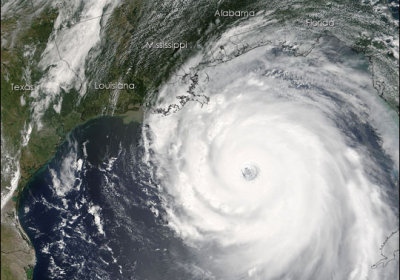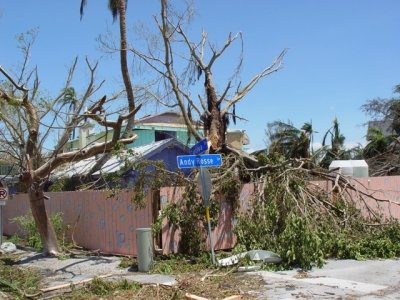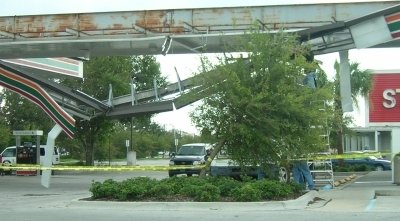Tropical storms
What is the difference between a hurricane, a typhoon and a tropical cyclone ?
The terms hurricane and typhoon are regionally specific names for a strong tropical cyclone.
Tropical cyclones with maximum sustained surface winds of less than 17 m/s are called tropical depressions.
Once the tropical cyclone reaches winds of at least 17 m/s they are typically called a tropical storm and assigned a name. If winds reach 33 m/s, then they are called:
- hurricane: in the North Atlantic Ocean, the Northeast Pacific Ocean east of the dateline, or the South Pacific Ocean east of 160E
- typhoon: in the Northwest Pacific Ocean west of the dateline
- severe tropical cyclone: the Southwest Pacific Ocean west of 160E or Southeast Indian Ocean east of 90E
- severe cyclonic storm: in the North Indian Ocean
- tropical cyclone: in the Southwest Indian Ocean
Find more informations about tropical storms at the NOAA/AOML Hurricane Research Division.
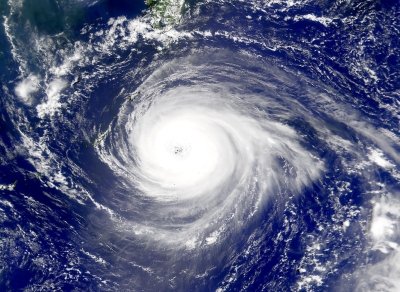
Source: SeaWiFS Project, NASA/GSFC and ORBIMAGE.
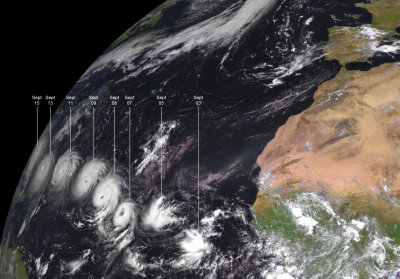
Hurricane Charley
Charley lasted from August 9 to 15, 2004. At its peak intensity it attained 240 km/h winds, making it a strong Category 4 hurricane on the Saffir-Simpson Hurricane Scale.
Charley was the strongest hurricane to hit the United States since Andrew in 1992. Although small in size, it caused catastrophic wind damage.
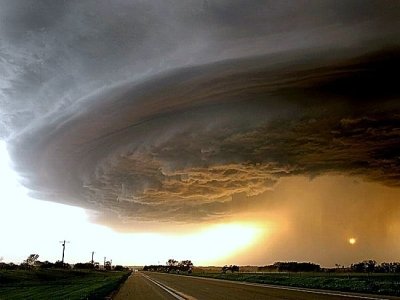
Hurricane Katrina
Hurricane Katrina was one of the costliest, deadliest and strongest hurricanes ever recorded in the history of the USA.
The hurricane formed over the Bahamas and crossed southern Florida as a moderate Category 1 hurricane before strengthening rapidly in the Gulf of Mexico. It stroke Louisiana as a Category 3 storm on August 29, 2005.
It caused severe destruction along the Gulf coast from central Florida to Texas, much of it due to the storm surge. The most severe loss of life and property damage occurred in New Orleans (Louisiana) which flooded as the levee system catastrophically failed, leaving 80% of the city flooded. About 2000 people lost their lives in the actual hurricane and in the subsequent floods. The storm is estimated to have been responsible for $81.2 billion in damage.
Three years later, in 2008, thousands of displaced residents in Mississippi and Louisiana were still living in trailers.
For more informations visit the page " Hurricane alert" of the EOEdu website.
